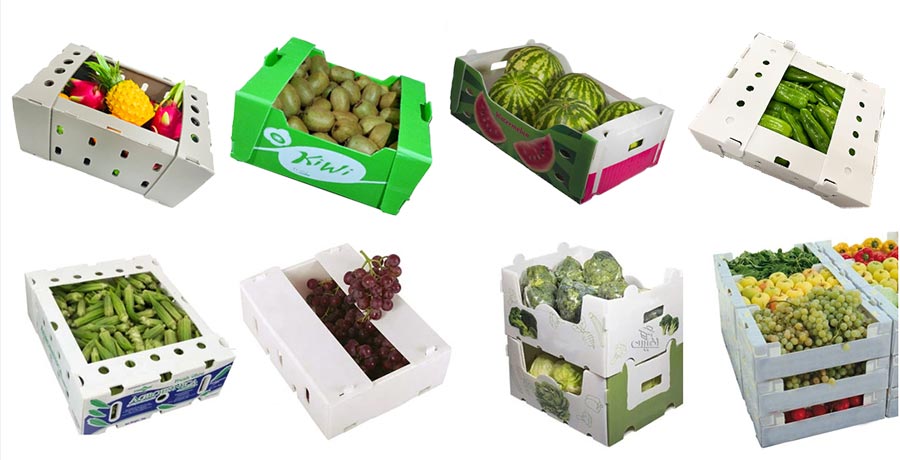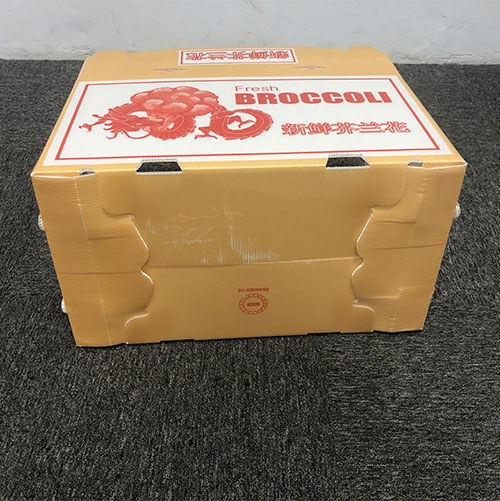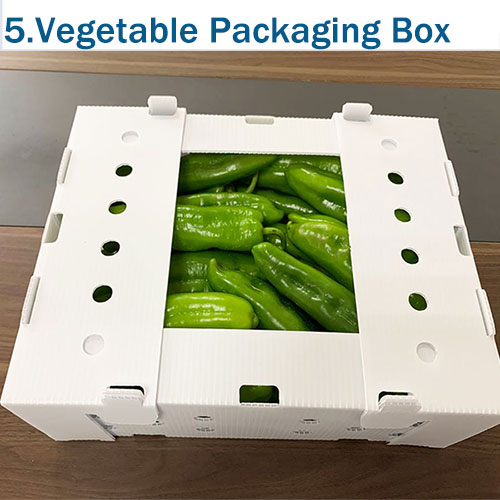
In modern agriculture, efficient packaging plays a crucial role in maintaining the freshness and quality of vegetables during transportation and storage. Among the many solutions available today, the PP Corrugated Vegetable Box stands out for its versatility, durability, and sustainability. Whether you are a farmer, wholesaler, supermarket, or logistics provider, choosing the right vegetable packaging box can significantly impact your operational success.
This guide covers everything you need to know about PP Corrugated Vegetable Boxes—from types and dimensions to colors, popular export countries, and how to choose the best box for your needs.

A PP Corrugated Vegetable Box is a container made from polypropylene (PP) corrugated plastic sheet, designed specifically for the packaging and transportation of vegetables. The box is composed of twin-wall extruded polypropylene, making it lightweight yet incredibly strong, water-resistant, and reusable.
These boxes are widely used in open markets, supermarkets, cold chain logistics, and exports for various types of vegetables such as lettuce, cabbage, tomato, green beans, carrots, spinach, and more.
There are several types of PP Corrugated Vegetable Boxes available depending on specific agricultural workflows, handling requirements, and the nature of the vegetables being packed. Each design addresses different logistics, ventilation, and durability needs, making them highly adaptable in the fresh produce industry.

These boxes are designed with collapsible walls, allowing for easy folding when not in use. Foldable designs significantly reduce return logistics costs for bulk distributors and farmers, especially in centralized collection points or long-distance supply chains.
Features: Foldable design, ventilation holes, ergonomic side handles
Use: Ideal for wholesale vegetable markets, collection centers, and supermarket restocking
Benefit: Space-saving during storage and transport; reduces volume up to 70% when collapsed
Common Sizes:
Vented stackable models are essential in warm climates or when transporting heat-sensitive produce. Proper air circulation prevents condensation buildup, reducing the chance of spoilage, especially during extended transport or cold chain delays.
Features: Perforated side walls, stackable edges, reinforced bottom
Use: Leafy greens, bok choy, celery, herbs
Benefit: Enhances ventilation and shelf life; ideal for cold chain distribution
Common Sizes:
These are designed for robust, long-haul shipping needs. Heavy-duty boxes are thicker (usually 5mm–6mm) and offer superior load-bearing capacity. Some come with lids to protect delicate produce from external elements.
Features: Reinforced sidewalls, optional lids, anti-slip stacking base
Use: Exporting root vegetables, squash, pumpkins, and cucumbers
Benefit: Durable in sea freight and air cargo; minimizes damage due to rough handling
Common Sizes:
For supermarkets and premium organic farms, customization plays a vital role in product branding. These boxes are designed to include company logos, contact information, QR codes for traceability, and attractive color schemes.
Features: Logo printing, barcoding, marketing messages
Use: Supermarket retail, CSA box programs, high-end export packaging
Benefit: Professional appearance, brand recognition, and supply chain transparency
Custom Dimensions: Fully customizable based on produce type and retailer needs
Extra Note: Custom designs are typically printed with food-safe ink on UV-coated PP sheets for outdoor resilience.
PP Corrugated Vegetable Boxes are highly versatile in size and structure. The ability to customize dimensions, wall thickness, color, and add-ons makes them an excellent fit for diverse farming and logistic operations. Below is an expanded breakdown of typical sizes and their recommended applications:
| Size (L × W × H mm) | Capacity | Ideal Use |
|---|---|---|
| 600 × 400 × 150 | 15–20 kg | Leafy greens, spinach, lettuce |
| 500 × 300 × 200 | 10–15 kg | Tomatoes, cucumbers, bell peppers |
| 700 × 500 × 250 | 25–30 kg | Pumpkins, zucchini, watermelons |
| Custom | Variable | Supermarkets, CSA programs, branding |
The sheet thickness directly impacts the durability and load resistance of the box, which should be matched carefully to the produce type and shipping distance.
Custom printing can include:
The flexibility of customization is one of the most appealing advantages of the PP Corrugated Vegetable Box over traditional cardboard or wooden crates.

Color not only plays an aesthetic role but also serves practical and compliance functions in the vegetable packaging industry. Different colors of PP Corrugated Vegetable Boxes help operators instantly identify produce type, grade, or customer destination.
These standard color codes often follow internal logistics guidelines and improve sorting efficiency at large agricultural collection centers or supermarket distribution warehouses.
Manufacturers offer Pantone color matching for brand consistency. For example, if a farm has a specific shade in their logo or packaging, the box can match it precisely.
Color-coding also helps segment organic vs. conventional produce, improving regulatory compliance in food safety and traceability.
By selecting the appropriate color for your PP Corrugated Vegetable Box, you not only enhance visual management but also reduce errors in sorting and inventory.
PP Corrugated Vegetable Boxes are gaining popularity worldwide due to increasing demand for eco-friendly and reusable agricultural packaging. The top markets include:
USA/Canada: Supermarkets and cold chain logistics for leafy vegetables
Used for both domestic transport and export of fresh produce like lettuce, kale, spinach
The demand is particularly strong where cold chain logistics and sustainable agriculture are being adopted aggressively.
| Feature | PP Corrugated Box | Cardboard Box |
|---|---|---|
| Waterproof | ✅ Yes | ❌ No |
| Reusability | ✅ High (20–50 uses) | ❌ Low (1–2 uses) |
| Strength | ✅ Excellent | ⚠️ Medium |
| Resistance to chemicals | ✅ Yes | ❌ No |
| Environmental impact | ✅ Recyclable | ✅ Biodegradable |
| Branding possibilities | ✅ Full-color printing | ⚠️ Limited to basic print |
PP corrugated boxes may cost more upfront but significantly reduce long-term packaging costs due to their durability and reusability.

Choosing the right PP Corrugated Vegetable Box depends on several key factors:
Switched from single-use cardboard to reusable PP Corrugated Vegetable Boxes and reduced packaging cost by 30% annually while enhancing brand image with custom printed boxes.
Used heavy-duty boxes with vented sides for long-haul tomato shipments to Germany. Reported a 20% reduction in spoilage and positive customer feedback on product condition.
Cleaning Tips:
Recycling:
PP material is 100% recyclable. After end-of-life usage, boxes can be ground and reprocessed into new corrugated sheets or plastic pallets.
The PP Corrugated Vegetable Box is a modern packaging solution offering durability, reusability, and excellent protection for fresh produce. It’s an ideal alternative to traditional cardboard boxes, especially for farms, exporters, and food logistics providers looking for cost-effective, sustainable packaging.
Whether you need a foldable design for space efficiency, a vented option for freshness, or a branded box for marketing, there is a PP Corrugated Vegetable Box that fits your needs.

Looking for reliable pp corrugated vegetable box manufacturer? Looking for high-quality PP Corrugated Vegetable Boxes at competitive prices? Polyflute offers customizable solutions in size, color, printing, and structure to suit your unique requirements. We ship globally and support low MOQ orders.
📞 Contact Us Today
📧 Email: [Sophia@polyflute.com]
🌍 Website: [www.polyflute.com]
📦 Sample orders available upon request!
